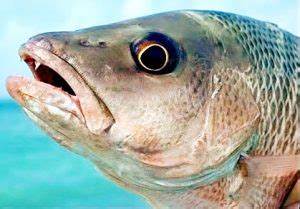
Mangrove snapper, also known as gray snapper, is a popular saltwater fish cherished by anglers for its delicious taste and the challenge it offers. Knowing where to find them and the techniques to catch them is key to a successful fishing trip. This comprehensive guide will provide you with all the information you need, covering their habitat, the best locations, effective techniques, and common mistakes to avoid. Whether you’re an experienced angler or a beginner, this article will satisfy your quest for actionable information.
Understanding Mangrove Snapper and Their Habitat
Mangrove snapper are versatile and adaptable fish found in both inshore and offshore waters. They thrive in warm coastal waters with ample cover and food supply. These fish are known for their sharp reflexes and cautious nature, making them challenging but rewarding to catch.
- Habitat: Mangrove snapper prefer mangroves, estuaries, docks, reefs, and wrecks where they can hide and ambush prey. These environments provide shelter and access to a variety of smaller fish and crustaceans.
- Behavior: They are most active during dawn and dusk, as reduced light makes it easier for them to hunt. Understanding their feeding patterns is critical for success.
- Relation to Fishing: These fish are common targets for anglers because of their abundance and the thrill of catching them.
The Best Locations to Catch Mangrove Snapper
Inshore Fishing Spots
Inshore areas like mangroves, estuaries, and piers are among the top locations for catching mangrove snapper. These areas provide plenty of natural cover, making them ideal habitats.
- Where to Look: Mangrove roots, submerged structures, and pilings are hotspots. Look for places with abundant baitfish, as this is a sign of predator activity.
- Tip: Fishing near mangroves during a rising tide increases your chances as it brings food sources closer to shore.
Offshore and Coastal Areas
For larger mangrove snapper, offshore reefs and wrecks are prime spots. These locations offer depth and protection, attracting schools of snapper.
- Where to Look: Focus on artificial reefs, rock formations, and deep wrecks. Larger snapper are often found in water depths of 50 to 150 feet.
- Tip: Use sonar to locate underwater structures and fish activity.
Top Techniques for Mangrove Snapper Fishing
Using the Right Gear
The right gear is crucial when targeting mangrove snapper. Their sharp teeth and powerful strikes demand durable equipment.
- Recommended Gear: A medium-action rod, strong reel, and braided line are essential. Circle hooks work best for snapper as they improve hook sets.
- Setup Tips: Use fluorocarbon leaders to make your line less visible underwater.
Best Bait Options
Mangrove snapper are opportunistic feeders, making live bait an excellent choice. However, cut bait and artificial lures can also be effective in certain conditions.
- Live Bait Options: Shrimp, pilchards, and pinfish are highly effective.
- Artificial Lures: Soft plastics and jigs mimic the natural movement of prey, enticing snapper to strike.
Factors That Affect Mangrove Snapper Fishing Success
Tides and Weather Conditions
Tides play a significant role in mangrove snapper fishing. Rising and falling tides create currents that stimulate feeding behavior.
- Tidal Tips: Fish during the first few hours of a rising or falling tide for the best results.
- Weather Influence: Overcast skies and steady barometric pressure are ideal conditions for fishing.
Fishing Seasons for Mangrove Snapper
The best time to catch mangrove snapper is during the warmer months when they are more active and closer to shore.
- Peak Seasons: Late spring through early fall offers optimal opportunities.
- Seasonal Adjustments: In winter, focus on offshore locations where the water temperature is more stable.
Step-by-Step Guide to Catching Mangrove Snapper
Finding the Right Location
Scout areas with plenty of cover and food sources. Use fish finders and sonar to locate structures and fish activity.
- Pro Tip: Look for diving birds, as they often signal schools of baitfish and predators nearby.
Setting Up Your Fishing Gear
Prepare your gear to maximize efficiency and minimize the chance of losing fish.
- Tips: Use light tackle for inshore fishing and heavier setups for offshore. Keep your hooks sharp and lines well-maintained.
Common Mistakes to Avoid When Fishing for Mangrove Snapper
- Using the Wrong Gear: Oversized tackle can scare off cautious snapper.
- Ignoring Tides: Failing to account for tidal changes reduces your chances.
- Poor Bait Presentation: Snapper are wary and require natural bait movement to strike.
Call to Action: Plan Your Next Mangrove Snapper Adventure
Equipped with this detailed guide, you’re ready to embark on your next fishing trip. From understanding their habitat to mastering the right techniques, every step you take will bring you closer to landing your prize catch. Start planning your adventure today!
FAQs
1. What is the best bait for mangrove snapper fishing?
Live bait like shrimp, pilchards, and pinfish are the most effective. These baits mimic their natural prey and increase your chances of success.
2. Where are mangrove snappers commonly found?
They are found near mangroves, estuaries, docks, reefs, and wrecks. These habitats provide shelter and abundant food.
3. What time of year is best for mangrove snapper fishing?
Late spring through early fall is the best time to catch mangrove snapper, as they are more active and closer to shore.
4. What gear is recommended for mangrove snapper fishing?
Use a medium-action rod, strong reel, and braided line with fluorocarbon leaders. Circle hooks are ideal for this species.
5. How do tides influence mangrove snapper fishing?
Tides create currents that stimulate feeding. Fish during the first few hours of a rising or falling tide for optimal results.







